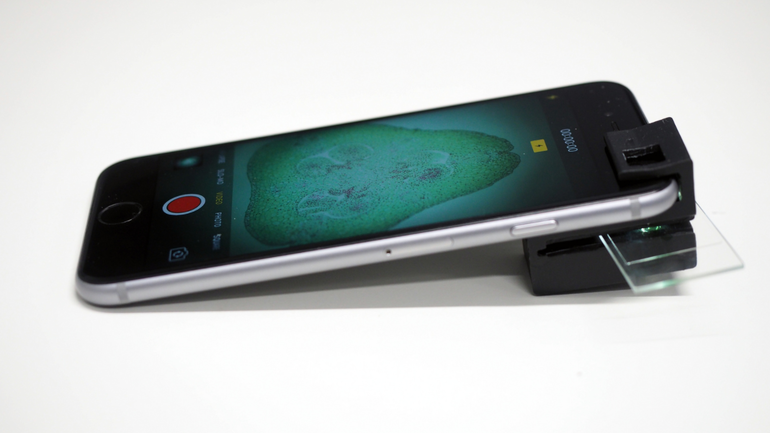3D-printed smartphone microscope is good enough for scientists


Your smartphone could soon be a fully functional microscope capable of examining samples as small as 1/200th of a millimeter. Australian researchers have developed a clip-on device that requires no external light or power sources to produce a clear picture of microscopic organisms and cells from animals, plants and blood -- and it can be made by anyone with a 3D printer, as the team is sharing the 3D printing files publicly.
Unlike other phone-based microscopes which use bulky LEDs and other power sources, the device works using internal illumination tunnels, which use light from the camera flash to illuminate the sample from behind. Lead developer Dr Anthony Orth said: "We've designed a simple mobile phone microscope that takes advantage of the integrated illumination available with nearly all smartphone cameras," adding that the device can be used as "an inexpensive and portable tool for all types of onsite or remote-area monitoring." The team anticipates the microscope being used to test water cleanliness, to detect disease and to analyze blood samples for parasites.
This isn't the first time scientists have tried to turn smartphones into microscopes, but it's comparatively the most successful. In 2016, Italian company Smart Micro Optics revealed its set of Blips lenses that could turn a phone's camera into a digital microscope capable of magnifying up to 80 times, while 2013 saw a YouTuber demonstrate how it can be done using Plexiglas and a laser pointer.
Via: ZDNet
Source: Scientific Reports
via Engadget RSS Feed "http://ift.tt/2BC2NKh"
Comments
Post a Comment